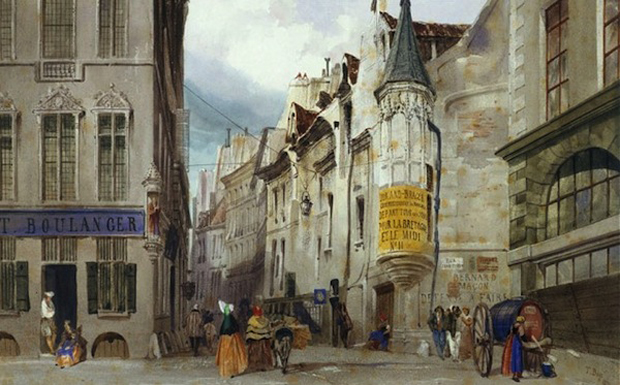
The Wallace shows the world's first restaurant
The Discovery of Paris: Watercolours by Early Nineteenth-Century British Artists exhibits a lost foodie spot in Paris
There are many delights to be had at The Wallace Collection's current exhibition of 19th century paintings of France by British artists. The Discovery of Paris: Watercolours by Early 19th Century Artists, features works R.P. Bonington, J.M.W. Turner, and Thomas Shotter Boys among others, all of which offer delightful representations of everyday life from the earlier part of the 19th century. The paintings also give great insight into how the capital looked prior to its rebuilding under the guidance of Baron Haussmann some decades later.
Yet there is one particular painting that arts and food journalist, Paul Levy picked out for particular attention. Levy, writing in the Daily Telegraph, notes that the Thomas Shotter Boys painting, The Corner of the Rue Bailleul and the Rue Jean Tison, 1831, happens to depict, Restaurant Boulanger, an establishment widely regarded as the first proper restaurant in the Western World.
As Levy puts it, Boulanger was the first proprietor to allow its customers to consume food on the premises. What's more Boulanger "also offered more than a single course, with a choice of dishes to be consumed at a time of the customer's own choosing, and served them to individuals seated at a table. He served "restorants" (possibly meaning hangover cure), such as the one made of finely minced chicken and other meats, broth and ground barley, a dish of sheep's trotters in white sauce, and a ragoût - something composed of several different ingredients cooked in a sauce."
It's a great piece, both for those keen to learn more about the origins of the restaurateur, and for gallery-goers looking for a little gastronomic insight. Read it in full here. To learn about today's innovative restaurant owners, please take a look at our book, The Art of The Restaurateur, and for more on one of the better-known artists in this exhibition, please consider our Turner book.